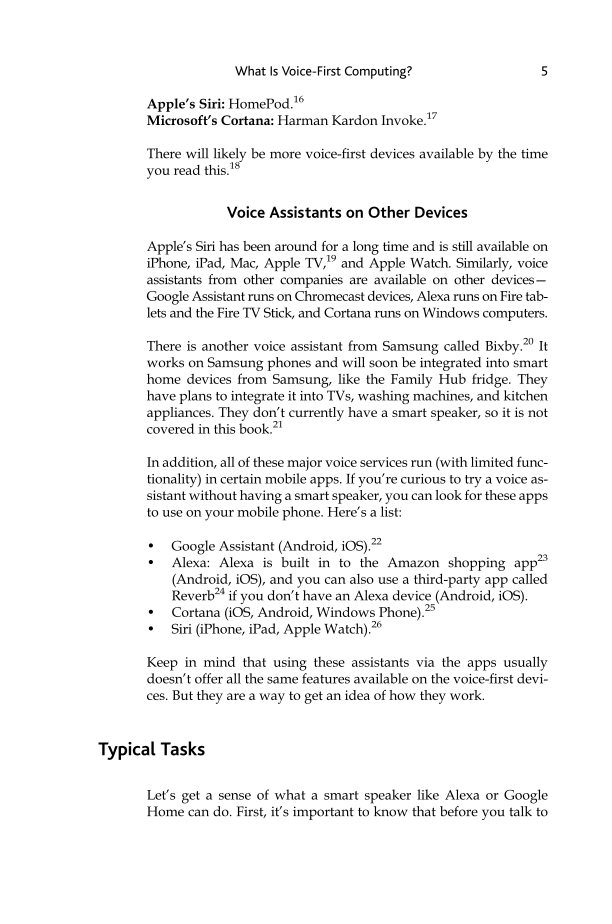Apple’s Siri: HomePod.16 Microsoft’s Cortana: Harman Kardon Invoke.17 There will likely be more voice-first devices available by the time you read this.18 Voice Assistants on Other Devices Apple’s Siri has been around for a long time and is still available on iPhone, iPad, Mac, Apple TV,19 and Apple Watch. Similarly, voice assistants from other companies are available on other devices— Google Assistant runs on Chromecast devices, Alexa runs on Fire tab- lets and the Fire TV Stick, and Cortana runs on Windows computers. There is another voice assistant from Samsung called Bixby.20 It works on Samsung phones and will soon be integrated into smart home devices from Samsung, like the Family Hub fridge. They have plans to integrate it into TVs, washing machines, and kitchen appliances. They don’t currently have a smart speaker, so it is not covered in this book.21 In addition, all of these major voice services run (with limited func- tionality) in certain mobile apps. If you’re curious to try a voice as- sistant without having a smart speaker, you can look for these apps to use on your mobile phone. Here’s a list: • Google Assistant (Android, iOS).22 • Alexa: Alexa is built in to the Amazon shopping app23 (Android, iOS), and you can also use a third-party app called Reverb24 if you don’t have an Alexa device (Android, iOS). • Cortana (iOS, Android, Windows Phone).25 • Siri (iPhone, iPad, Apple Watch).26 Keep in mind that using these assistants via the apps usually doesn’t offer all the same features available on the voice-first devi- ces. But they are a way to get an idea of how they work. Typical Tasks Let’s get a sense of what a smart speaker like Alexa or Google Home can do. First, it’s important to know that before you talk to What Is Voice-First Computing? 5
Document Details My Account Print multiple pages
Print
You have printed 0 times in the last 24 hours.
Your print count will reset on at .
You may print 0 more time(s) before then.
You may print a maximum of 0 pages at a time.





































































































